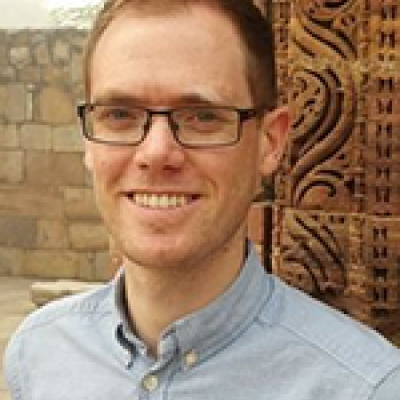Dr Martin Coombes
Researcher
Member of the Oxford Resilient Buildings and Landscapes Lab
Researcher
Member of the Oxford Resilient Buildings and Landscapes Lab
Academic Profile
Martin is a biogeomorphologist with broad interests in the two-way interactions between organisms and the physical environment. Much of his research is interdisciplinary and focusses on:
- Rock breakdown processes, controls and laboratory simulation. This includes the interactive effects of temperature, moisture, salt and organisms in the weathering of rock coast landscapes and building stone, and increasingly in a context of climate change;
- The bioprotective roles and biodiversity value of epilithic plants and animals. This includes research on barnacles, seaweed and mussels at the coast and the impact of plants (both good and bad) on historic buildings and ruins;
- Ecological enhancement in engineering design. This interest stems from his PhD research on the role of biogeomorphological processes in shaping colonisation and biodiversity patterns on coastal rocks and sea defence structures;
- Biogeomorphology. Martin has a particular interest in the theoretical development of biogeomorphology as a sub-discipline of geomorphology and the parallel concept of 'ecosystem engineering'.
Previously, Martin was a Departmental Lecturer in Physical Geography here in Oxford, and a Lecturer at Worcester College and St Hilda's College.
Current Research
Martin is a member of the Oxford Resilient Buildings and Landscapes Lab (OxRBL) and the Landscape Dynamics research cluster, and tutor for the EPSRC-funded Centre for Doctoral Training in Science and Engineering in Arts Heritage and Archaeology (SEAHA). As part of this role, he is currently supervising Tim Baxter's project on Biodiversity and bioprotection of historic maritime structures: a possible win-win?
Other projects include:
'UrbanBioLabs' - A collaboration between colleagues within OxRBL, the Open University, and external partners examining novel ways of engaging publics in urban sites through plants, ecology, and heritage using science-art initiatives. Funded by an ESRC Impact Accelerator Award.
Bioprotection and ecosystem engineering along the Argentinian coastline - A collaborative project with Dr Jorge Gutiérrez funded by National Geographic and the Agencia Nacional de Promoción Científica y Tecnológica, Argentina. This work examines the influences of mussel beds and coralline algae on rock-surface microclimates, salt ingress, and erosion rates.
Heritage horticulture - A scoping project exploring the unique heritage values of walled gardens in the UK, and identifying opportunities for understanding and adapting to climate change is historic estates and gardens. This links to Martin's wider research interests in plants, heritage, biodiversity, and historic walls and ruins.
Teaching and Supervision
Recent Graduate Research Students
| Tim Baxter | Biodiversity and bioprotection of historic maritime structures: a possible win-win? |





